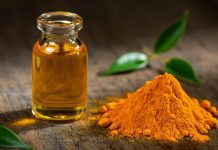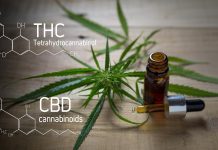
Dr Adam Norris explains the intricacies of the endocannabinoid system and where research into its role could be heading.
Dr Adam Norris has been working as a physician in Brantford, Ontario for five years. He completed his undergraduate studies at Dalhousie University in Neuroscience. He received his medical degree from Ross University, did a Family Medicine residency at Northeastern University School of Medicine in Ohio, and is board certified in both Canada and the US.
As well as being a Family Physician and Medical Director of GreenDot Medical Center, Cannabinoid Clinic, he is currently acting as an Assistant Clinical Professor for Faculty of Family Medicine and Associate Professor at the MGD Centre for Medicinal Cannabis Research.
Over the last year, he has taken a role as a consultant for Addiction Medicine at Brantford General Hospital. Norris was presenting the keynote speech at The Cannabis Society’s two day event in Berlin where Medical Cannabis Network were in attendance.
Norris gave an indepth overview of the endocannabinoid system and the factors which impact on it.
The endocannabinoid system
Introducing himself to attendees Norris said: “I am a family doctor and Addiction Medicine Physician in Brantford, Ontario. I have been running cannabis medicine clinic for the last four and a half years, and I also deal with addiction and cannabis. I’m going to talk a little bit more about the cannabis that is already in us.
“We have a system which makes different endocannabinoids, and these were discovered back in the 90s. I have been involved with a few studies and I am currently doing a team study on pain out of McMaster University with 300 patients.
“We are going to review the main components of the endocannabinoid system and are going to be reviewing the physiological processing of this, and where those effects are in the body.
“I’m really interested in the signalling and the aspect that we could be making too much, or too little, of our own cannabis. How are there generalised interactions with the current drugs we are prescribing and phytocannabinoids? The endocannabinoid system has an enormous amount of physiological processes that I think we have overlooked over many years.
“It is an ancient signalling system that is found in all vertebrates, so anything that has a spine has the ability to have an endocannabinoid system and actually bind other cannabinoids, or a different substance that may bind to its receptors. It again plays a role in the regulatory systems. Animal models have been shown to have effects here with inflammation, pain, neurodegenerative diseases, and psychiatric disorders.
Receptors
Providing an overview of the discovered receptors and their potential in a medical context Norris continued: “There are three main components to any good signalling system. [The] first one’s going to be the receptors themselves. We have discovered two thus far called CB1 and CB2 (cannabinoid receptor one and cannabinoid receptor two). Now we need the actual endocannabinoids themselves, the parts that are in between such as what helps make these endocannabinoids and what helps break them down? What can we modulate to allow them to stay around longer?
“CB1 was found in the nervous system, primarily in the brain. CB2 is primarily found in the immune system, but also found in a whole host of organs. Next along are these really interesting ones called transient receptor potential vanilloid; what exactly are they? They are the receptors that we discovered to respond to capsaicin, which is an extract from peppers to help with pain – they are also responsive to endocannabinoids.
“Then we have these other receptors that seem to be receptive to some of these endocannabinoids, such as 5-HT1A, 5-HT2A and interestingly 5HT1A is now the source of the location for the newer anti-anxiety drugs like one in Canada called Trintellix which goes after that receptor – somewhere that we can see interaction with a phytocannabinoid.
“So, moving along, now, these are the components of the cannabinoid receptors. So again, CB1 was discovered in 1990, found almost entirely on the nervous system and then the CB2 receptor, which is found primarily in the peripheral tissue, primarily in the immune system, and this was discovered a few years later.
“So again, diving into the other one, CB1 and CB2, this is the known site of the action of the capsaicin. And interestingly enough it is a target receptor for 2AG and anandamide, [it] mediates pain through different mechanisms than endogenous cannabinoids and opioids. This is a really interesting area of study. Even a pharmacy out of Nova Scotia right now is extracting terpenes and mixing them with capsaicin for a topical osteoarthritis treatment. Very fascinating work that’s going on between the different receptors and the different products.
“Now again, the components of the endocannabinoid system, the endocannabinoids – these [CB1 & CB2] are two that were discovered. Anandamide is a partial agonist of CB1 which means if that is going to activate that receptor, it’s going to give it a positive activation versus an antagonist which is going to block that receptor. So again, it’s really kind of going towards the CB1 and CB2 and although this was discovered first, the 2AG is a little more potent. So, this was discovered second, but it tends to have a little bit more activity. These are definitely areas of interest for research, because you really want to know can we modulate this system.”
Retrograde signalling system
Expanding on the actual processes of the system Norris continued: “It’s interesting because it’s a retrograde signalling system. So, everything in most neuroscience is propagation forwards. Signalling came from part one, went to part two, went to part three, then part four; whereas this is a retrograde signalling. This is a signalling feedback system. So, these are endocannabinoids that are actually produced not by the foreword mechanism, but by a backward mechanism. They are produced in the later part, and they signal backwards to the CB receptors, and then modulate the release of neurotransmitters. This is an amazing feedback system loop that we have in our body; absolutely brilliant. This is the first of its kind seen in the neuroscience world, the fact that it is this retrograde signalling within the neurons.
“Now, this is kind of that third component. So, we have the endocannabinoids. We have those receptors. Now we’ve got parts that can either keep those endocannabinoids around longer or break them down a little bit quicker. This used to actually be considered only associated with endocannabinoids but now realise there’s actually multiple systems where these are involved, but they’re slowing down the breakdown of them – producing and slowing it down. So again, these can be adjusted to strengthen or prolong the effect.
“Now, how do we regulate it? This is what is really interesting. We have discovered the system and what happens just like any other system; but what if we have too much or too little? We have very, very few cases of excess endocannabinoid system in the literature. There is not a lot; part of it is actually due to one of the drugs that we had come out. It was used for appetite and weight management, and it caused horrific side effects. It caused depression, increased risk of suicide, and it was pulled from the market. Not a whole lot of stuff in the literature about this, but [as a result] what we now know is if somebody has fibrosis liver, they properly should take care in taking too much cannabis – but again, we have no idea what ‘too much’ is.
“I love this research. Most research is coming out of ICCI, with Dr Ethan Russo, but it’s touching a whole lot of literature worldwide. So, something called Clinical Endocannabinoid Deficiency Syndrome again suggested back in the late 90s, or in paperback in 2003 with Dr Russo implicated for migraines, IBS and fibromyalgia. These are treatment resistant conditions, these are things that we don’t have a blood test for, we don’t have a way to verify them and we’re using a whole lot of other drugs to try and treat them that some people get improvement from, some people don’t. Most of these are going to get a lot of side effects.
“Based on the theory that many neurological disorders are associated with neurotransmitter deficiencies, and a similar concept of the endocannabinoid that it could be running low. Again, this has not been proven; we have a lot of animal studies and a few human studies that have kind of lead us down this direction. We clearly need more research and clearly have a place that we can be going after in terms of research.
Migraine, IBS and fibromyalgia
Continuing on the subject of Endocannabinoid Deficiency Syndrome and the conditions theorised to be associated with it Norris said: “So, similarities – they [migraine, IBS and fibromyalgia] are all hyperalgesia, meaning they are associated with increased pain. They are all diagnosis of exclusion – there is no definitive test for them. They are all associated with increased depression and anxiety and there is comorbidity overlap among all three of them.
“This is not to tell you that yes, if you go ahead and you give your patient 10% of this and you give it in this modality, they are going to get better. No, no, – we have more models that say there could be low endocannabinoids, and this is a potential place for us to research and develop products to go after.
“Now moving on to another chronic pain. – migraines. Here we’re talking primarily about blood vessel diameter. So, right now a lot of the treatments that we use for migraines are going to be trying to shrink the blood vessels. The first line of treatment is going to be an anti-inflammatory. One thing we’re looking at is blood vessel diameter and blood vessel response to endocannabinoids.
“Now, this is what’s really wonderful. When we look at the vessel diameter, we’re looking at two different things here. They gave patients capsaicin, and they were able to see that the blood vessels end up shrinking. that was expected behaviour, people expect the blood vessels to go down, but when we blocked those receptors, it went back up again. So again, what is this meaning? A place to modulate and this is a place that we can go after with endocannabinoids.
“Acute opiates will work together with the endocannabinoid system. So, if somebody has broken their leg or they are bleeding and you give them a shot of morphine – it works together. If somebody starts taking it every single day for chronic back pain, we actually see one thing is an independent system. antidepressants, we’re really not too sure how they interact with the system, because there’s a lot of what we call agonist trafficking.”
The role of omega fatty acids
Interestingly Norris continued to discuss the effect of diet on the endocannabinoid system: “Omega threes are actually looked to be the gateway keeper of the endocannabinoid system, there’s definitely a correlation there. So, when we see individuals who are eating a very heavy omega six diet – typically a very farmed animal meat diet – we’re going to see more inflammation than those who are eating a higher omega three diet and we think this plays a role with the endocannabinoid system.
“So again, where are these physiological effects happening? As alluded to in the beginning, everywhere. Everywhere in the body, there is a receptor and there is an enzyme to modulate the system and there are varying effects. THC is a partial agonist again, partially activating but it mimics our endocannabinoid, so it acts very similar to what we are currently producing. This is involved with pain relief, muscle spasms, and anti-nausea and anti-vomiting, appetite stimulant and it is sedating etc. However, these are side effects because of the physiological effects on areas of the brain.
“In terms of cannabidiol this actually acts on more than just the cannabinoid receptor which is fascinating and one of the reasons why we think it lifts mood; it also has the anti-inflammatory analgesic antiemetic effect. What is beautiful about these is the synergistic way [in which] they work together. I think that’s where we need to really understand more thoroughly; how these cannabinoids work.
“Now the effects of phytocannabinoids; I briefly alluded to that before but muscle relaxant, pain releif, sleep aid, antidepressant – it could be causing anxiety, but it could also be reducing it varying from individual to individual. What is really important is again, to understand how they work together – there is a point to mixing phytocannabinoids and not just having isolate.
“In terms of how they interact; I’m going to leave this as the last piece of the puzzle because this is I think, the art of prescribing cannabis, as we don’t know what it is indicated for. We really don’t know how much to give and we are still in its infancy. Phytocannabinoids have a very complex interaction and this mimics anandamide and 2AG.
“However, just like everything else, if you take too much, we can see that chronic use causes down regulation of all these receptors. The question is where is that grey zone? It is probably very individualised and there’s likely genetic component too what constitutes acute compared to chronic individuals and where do we see that benefit then become more harmful?
“So again, to summarise everything; the endocannabinoid system is an ancient signalling system. It plays a role in many physiological and neurological findings in the body. There are two main endocannabinoids but there is likely to be an underactive effect from the deficiency. The phytocannabinoids directly interact with this system and moderate this system, but then some medications might even hijack the system and mimic this.”
This article appeared in the first issue of Medical Cannabis Network which was out in January. Click here to subscribe.







